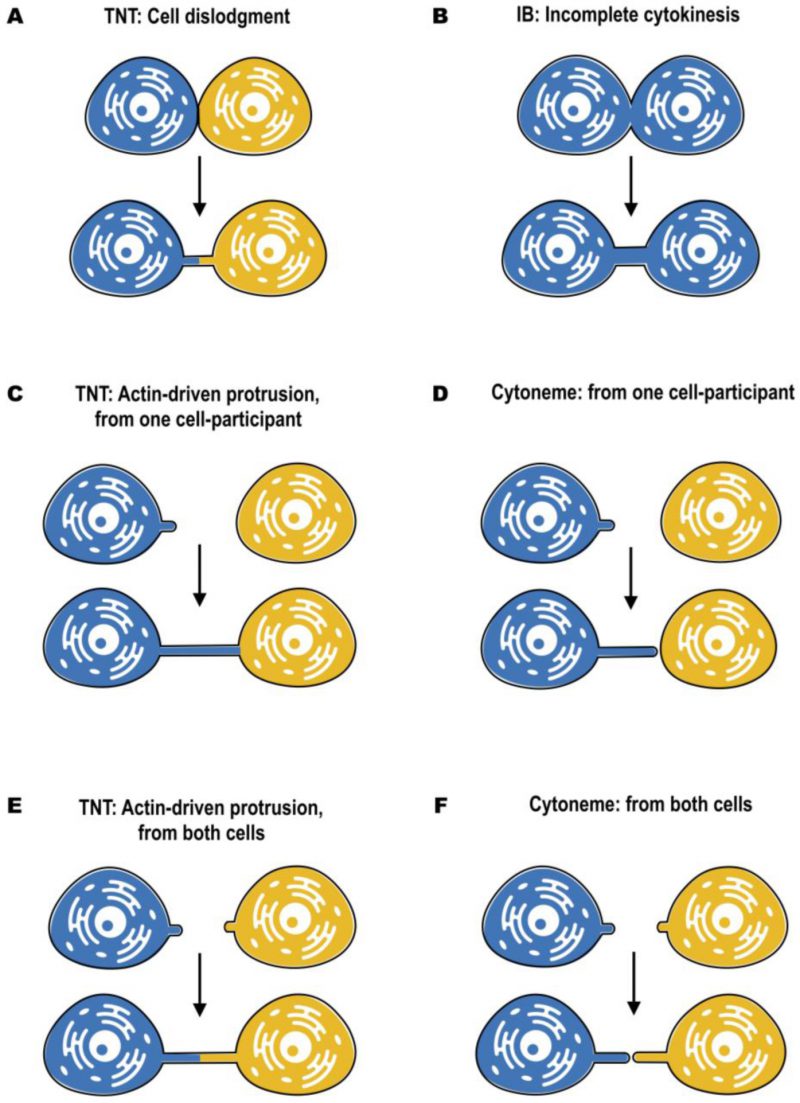Back to article: Fine intercellular connections in development: TNTs, cytonemes, or intercellular bridges?
FIGURE 3: Mechanisms of formation of TNTs, cytonemes and intercellular bridges, according to optical live microscopy. TNTs can be formed by cell dislodgment (A), when cells first make contact and then form a nanotube while migrating in the opposite directions. Morphologically it resembles the formation of intercellular bridges (B). However, intercellular bridges are formed only between dividing cells by incomplete cytokinesis, while TNTs can be formed by cells of different origin. Thus, formation of TNTs requires membrane fusion prior to cell dislodgement, while formation of intercellular bridges requires inhibition of abscission after cell division. Another mechanism of TNT formation, called “actin-driven”, takes place when either one (C) or both (E) of the cells induce the outgrowth of filopodia-like protrusions. Similar mechanism is shown for cytonemes. Cytonemes can be formed from producing to receiving cells and vice versa (D), as well as from both of them (F). However, in case of cytonemes, the outgrowth is finalized by establishing the contact, while TNT formation require subsequent membrane fusion.

